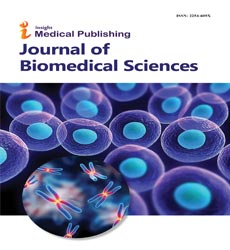Therapeutic Applications of Ultrasound
Marty Read*
Department of Medicine and Surgery, University of Illinois Chicago, Chicago, USA
- *Corresponding Author:
- Marty Read
Department of Medicine and Surgery,
University of Illinois Chicago, Chicago
USA
E-mail:read.marty@mr.edu
Received Date: December 03, 2021; Accepted Date: December 17, 2021; Published Date: December 24, 2021
Citation:Read M (2021) Therapeutic Applications of Ultrasound. J Bio Med Sci Vol.10 No.6:e005.
Editorial Note
Health-related ultrasound includes classification techniques (mainly image resolution techniques) using ultrasound, as well as therapeutic applications of ultrasound. In medical diagnosis, it can be used to create a picture of internal body structures such as tendons, muscles, bones, blood vessels, and bodily organs, to measure some characteristics (e.g. ranges and velocities) or to generate a revealing audible sound. Their aim is usually to find a source of disease or to rule out pathology. The use of ultrasound to produce visual images for medicine is called medical ultrasonography or simply sonography. The practice of examining pregnant women using ultrasound is called obstetric ultrasonography, and was an earlier development of scientific ultrasonography. Ultrasound consists of noise waves with example which are significantly higher than the range of individual hearing (>20,000 Hz). Ultrasonic images, also known as sonograms, are created by sending signal of ultrasound into tissue utilizing a bang. The ultrasound signal echo off tissue with different expression properties and are returned to the probe which files and displays them as an image. Various sorts of images can be formed. The most common is a B-mode image (Brightness), which displays the acoustic impedance of a twodimensional cross-section of tissue. Other styles display blood move, motion of structure after a while, the location of blood, the occurrence of specific molecules, the rigidity of tissue, or the anatomy of an three-dimensional region. In comparison with other medical the image modalities, ultrasound has several advantages. It gives you images in current, is portable, and can consequently be brought to the bedside. It is continously reduce image strategies and does indeed provide better linear radiation not use unsafe ionizing radiation. Drawbacks include various limits on its field of view, the advantages of patient cooperation, reliance on patient physique, difficult rigidity image structures obscured by bone, air or gases, and the necessity of a skilled operator, usually with professional training. An ultrasound consequence on fetal biometry printed over a part of paper. Sonography (ultrasonography) is generally used in drugs. It is possible to perform both diagnosis and beneficial procedures, using ultrasound to guide interventional procedures such as biopsies or to drain collections of fluid that can be both diagnostic and beneficial. Sonographers are medical professionals who perform scans that happen to be customarily interpreted by radiologists, physicians who specialize in the use and interpretation of medical imaging methods, or by cardiologists with regards to cardiac ultrasonography (echocardiography). Increasingly, medical doctors and other health-related professionals who provide direct patient health care are applying ultrasound in office and clinic practice (pointof- care ultrasound). Sonography is effective for the image soft tissues of the body. Somero structures such as muscle, tendon, testis, breast, thyroid and parathyroid glands, and the neonatal brain are imaged at higher frequencies (7–18 MHz), which provide better linear (axial) and horizontal (lateral) resolution. Deeper set ups such as hard working liver and kidney are imaged at lower frequencies (1–6 MHz) with lower central and lateral image resolution as a price of deeper structure penetration. A general-purpose ultrasound transducer may be used for almost all imaging purposes sometimes situations may require conditions specialized transducer. Most ultrasound assessment is conducted by using a transducer at first glance of the body, but better visualization is often possible when a transducer can be put inside the entire body. Intended for this purpose, specialuse transducers, including endovaginal, endorectal, and Trans Esophageal Transducers are commonly employed. On the extreme, very small transducers can be attached to small diameter catheters and put within blood vessels to image the surfaces and disease of those vessels.

Open Access Journals
- Aquaculture & Veterinary Science
- Chemistry & Chemical Sciences
- Clinical Sciences
- Engineering
- General Science
- Genetics & Molecular Biology
- Health Care & Nursing
- Immunology & Microbiology
- Materials Science
- Mathematics & Physics
- Medical Sciences
- Neurology & Psychiatry
- Oncology & Cancer Science
- Pharmaceutical Sciences
